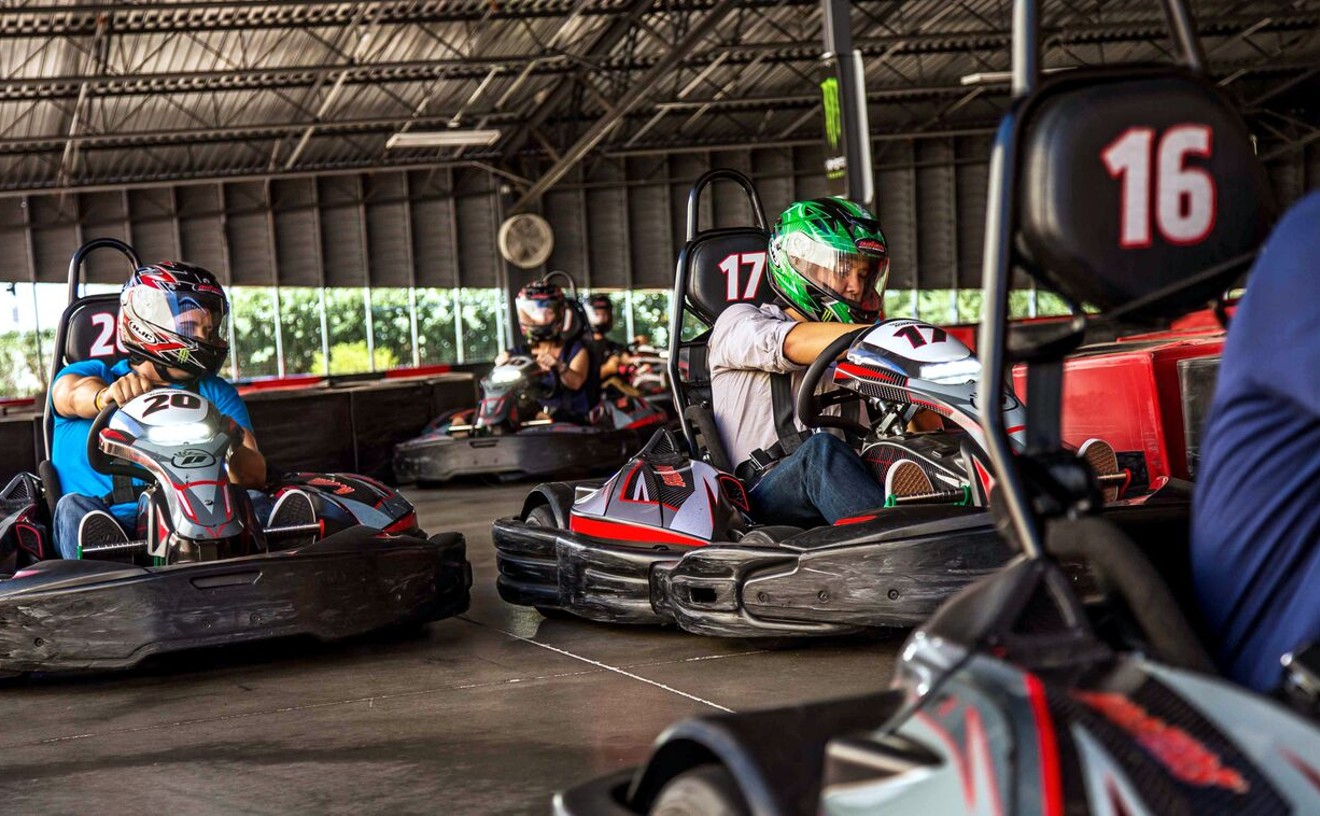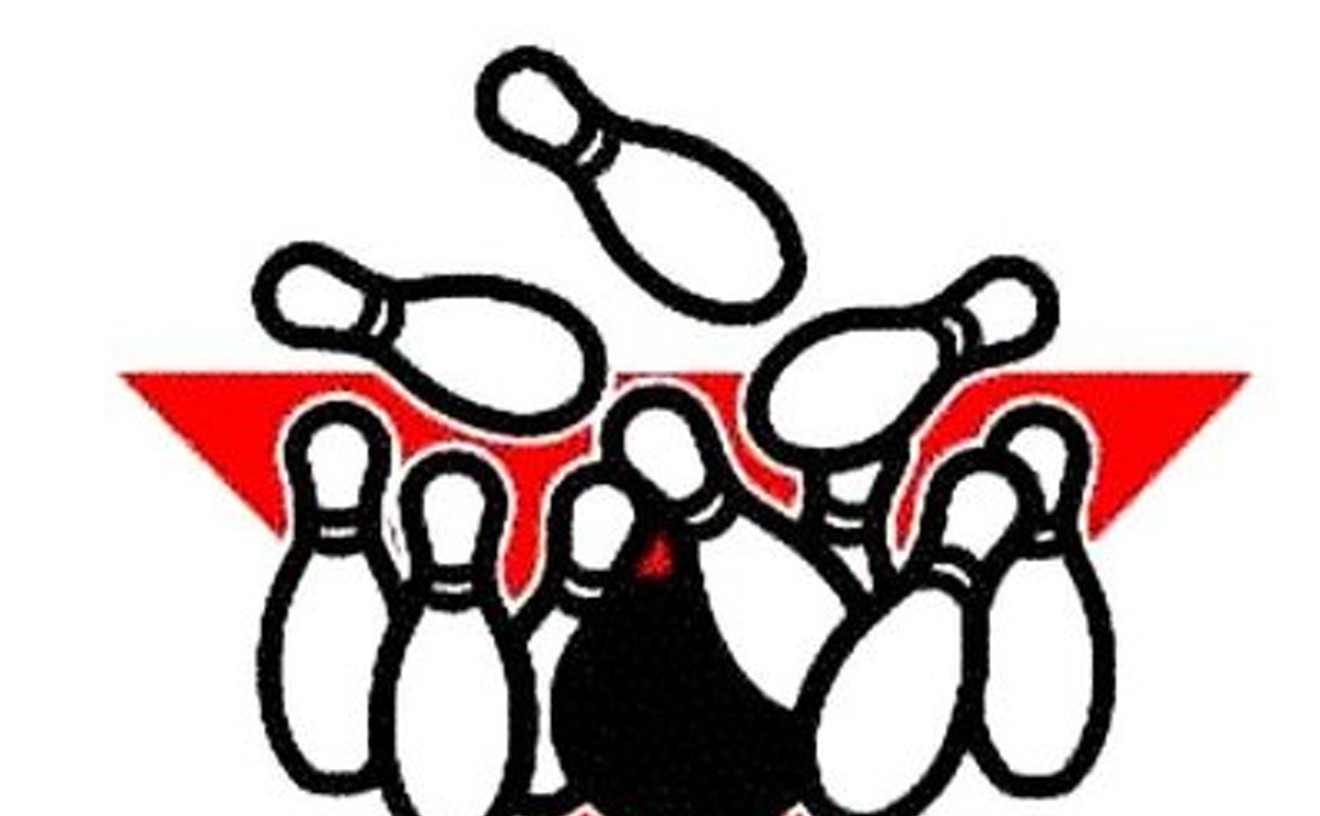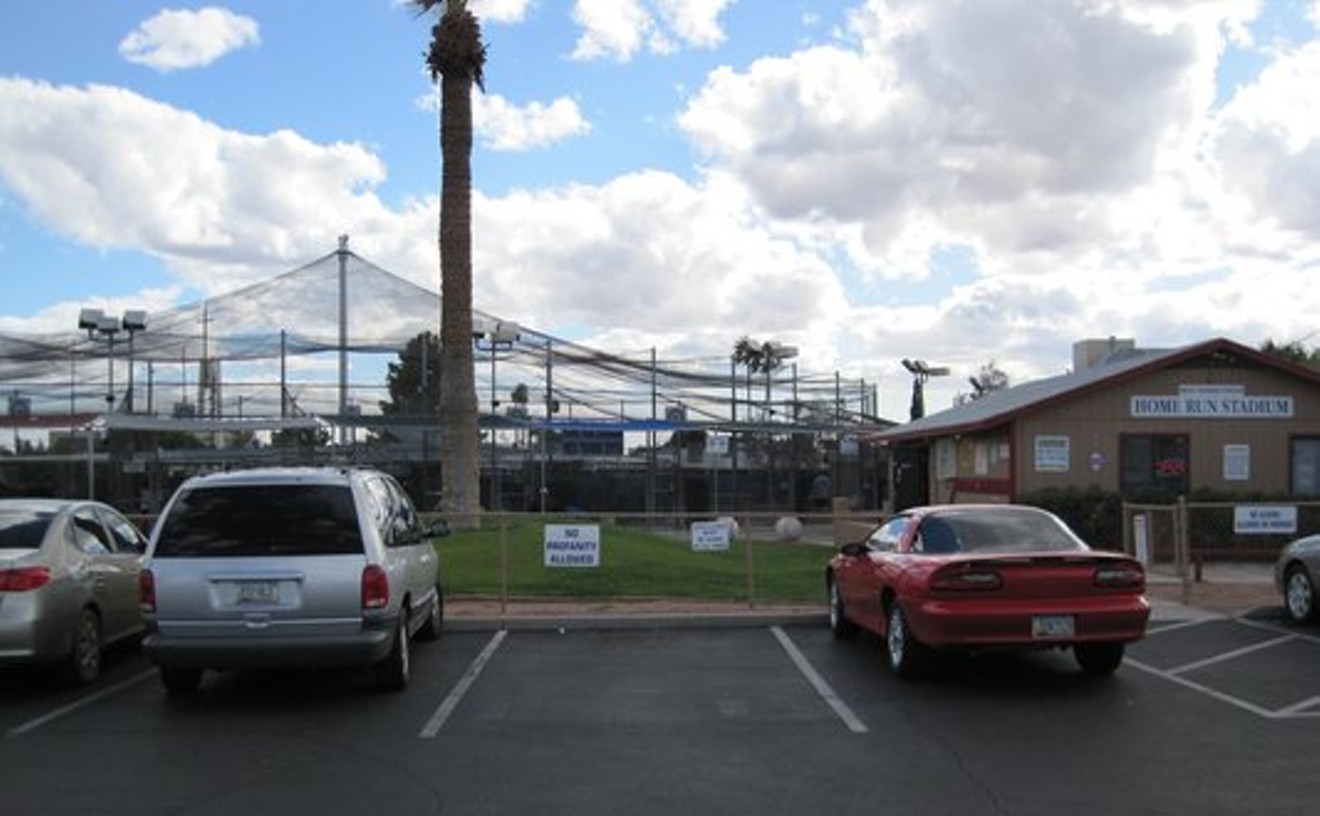All go-karts are not created equal. It takes just one trip to F1 Race Factory to learn this.
For starters, the go-karts at F1 peak at about 45 miles per hour and handle like mini-Porsches. Racers don aerodynamic helmets, racing jumpsuits, and gloves. Once they're suited up, racers can choose from two air-conditioned indoor tracks, which occupy about a third of the 113,000-square-foot warehouse facility (actually the carcass of a former Sam's Club).
You know a kart-racing operation is serious when the very professional employees give Breathalyzer tests to racers who've been throwing back booze at the trackside bar and lounge. If you do get pulled over for racing under the influence, though, you can enjoy yourself at the restaurant/bar — complete with barstools built from automotive wheels and more than 30 TVs screening ESPN and the SPEED channel. You can also burn some time perusing the collection of retired racecars, climbing the rock wall ($5) or playing in Race Factory's decent arcade.
F1 Race Factory sits on a peninsula of land between Loop 202 and State Route 143, on the Tempe-Phoenix border. Unfortunately, the adage "you get what you pay for" holds true. And at $25 per racer per race, F1 Race Factory ain't gonna be a first date for cash-strapped teens.
Insiders say you should rent the entire facility (which includes unlimited racing) for a large party and split the cost. Each kart is electronically timed and ranked on a TV screen, making the competition and rivalry, well, addicting.













